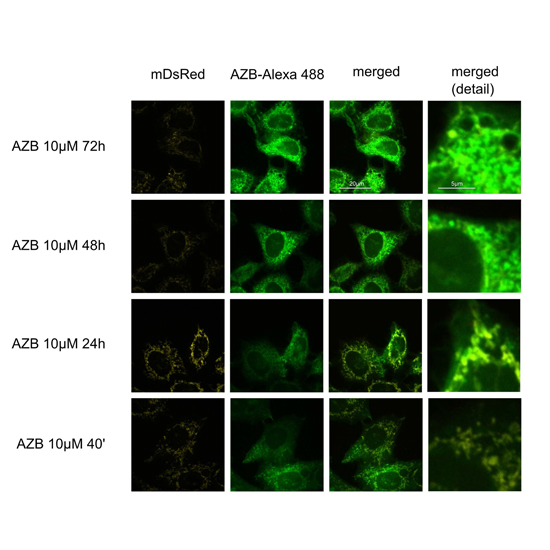New insights into the intracellular distribution pattern of cationic amphiphilic drugs
10-Mar-2017
Scientific Reports, 7, Article number: 44277, doi:10.1038/srep44277
Scientific Reports, online article
Cationic amphiphilic drugs (CADs) comprise a wide variety of different substance classes such as antidepressants, antipsychotics, and antiarrhythmics. It is well recognized that CADs accumulate in certain intracellular compartments leading to specific morphological changes of cells. So far, no adequate technique exists allowing for ultrastructural analysis of CAD in intact cells. Azidobupramine, a recently described multifunctional antidepressant analogue, allows for the first time to perform high-resolution studies of CADs on distribution pattern and morphological changes in intact cells. We showed here that the intracellular distribution pattern of azidobupramine strongly depends on drug concentration and exposure time. The mitochondrial compartment (mDsRed) and the late endo-lysosomal compartment (CD63-GFP) were the preferred localization sites at low to intermediate concentrations (i.e. 1 μM, 5 μM). In contrast, the autophagosomal compartment (LC3-GFP) can only be reached at high concentrations (10 μM) and long exposure times (72 hrs). At the morphological level, LC3-clustering became only prominent at high concentrations (10 μM), while changes in CD63 pattern already occurred at intermediate concentrations (5 μM). To our knowledge, this is the first study that establishes a link between intracellular CAD distribution pattern and morphological changes. Therewith, our results allow for gaining deeper understanding of intracellular effects of CADs.











